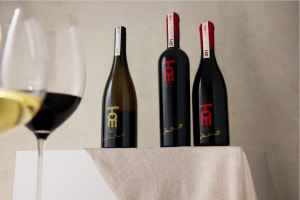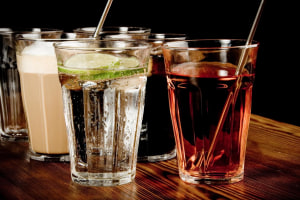Taylors Wines has introduced a temperature sensor that appears on the back label of its Taylors Estate and Promised Land wines.
The sensor uses thermo-chromatic ink technology that changes colour depending on the temperature of the wine, turning green when the white wine is just right to pour, and fuchsia for the red wines.
The idea was executed by creative agency Mr Wolf, and Denomination (previously known as The Collective) designed the packaging. Collotype printed the labels.
As part of its Live Better by Degrees media campaign, the Clare Valley family winery said the new labels were designed to help everyday drinkers appreciate wine the way the winemaker intended:

Through specially commissioned IPSOS research, Taylors discovered that eight out of 10 Australians drank their reds at room temperature, meaning that every week, 2.5 million bottles of red wine were inadvertently consumed in a way that stripped them of their character and subtlety.
Experts recommend that most red wines are served between 12-18°C, while the average household, particularly in summer, is at or above 22°C.
Serving a red wine at ‘room temperature’, Taylors argues, makes the wine flat and flabby, robbing it of its subtle flavours and aromas.
And while white wine is better enjoyed on the chillier end of the thermometer (between 6-12°C), bringing down the temperature too low will mask the wine’s unique characteristics.
Taylors Wines chief marketing officer Cameron Crowley said sensor accuracy was vital before launch of the labels.
“Once we understood the issue of temperature, we immediately jumped into testing product viability,” he said.
“We wouldn’t accept anything but a 1°C accuracy range, and our label printers were up to the challenge to accomplish this task.”
The media campaign will include an interactive website to educate consumers about the new labels and the different serving temperatures for wine, as well as social videos, quizzes, XML temperature driven banners, as well as 30-second radio spots across Sydney, Melbourne and Brisbane.
Taylors Wines also worked with Mr Wolf to create an animated content piece, designed to tell the story of enjoying wine at the right temperature. The content piece will be amplified digitally through social and pre-roll.







